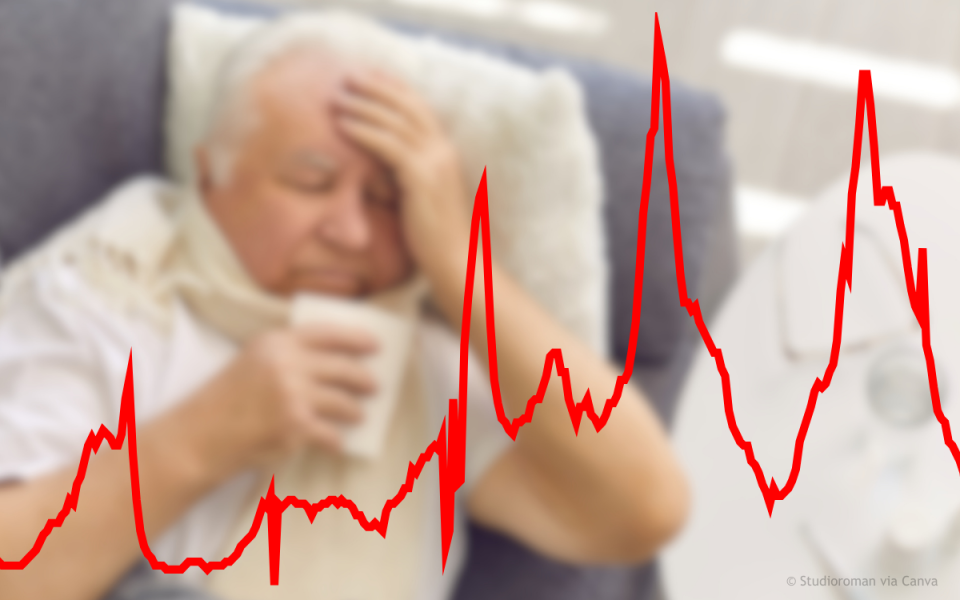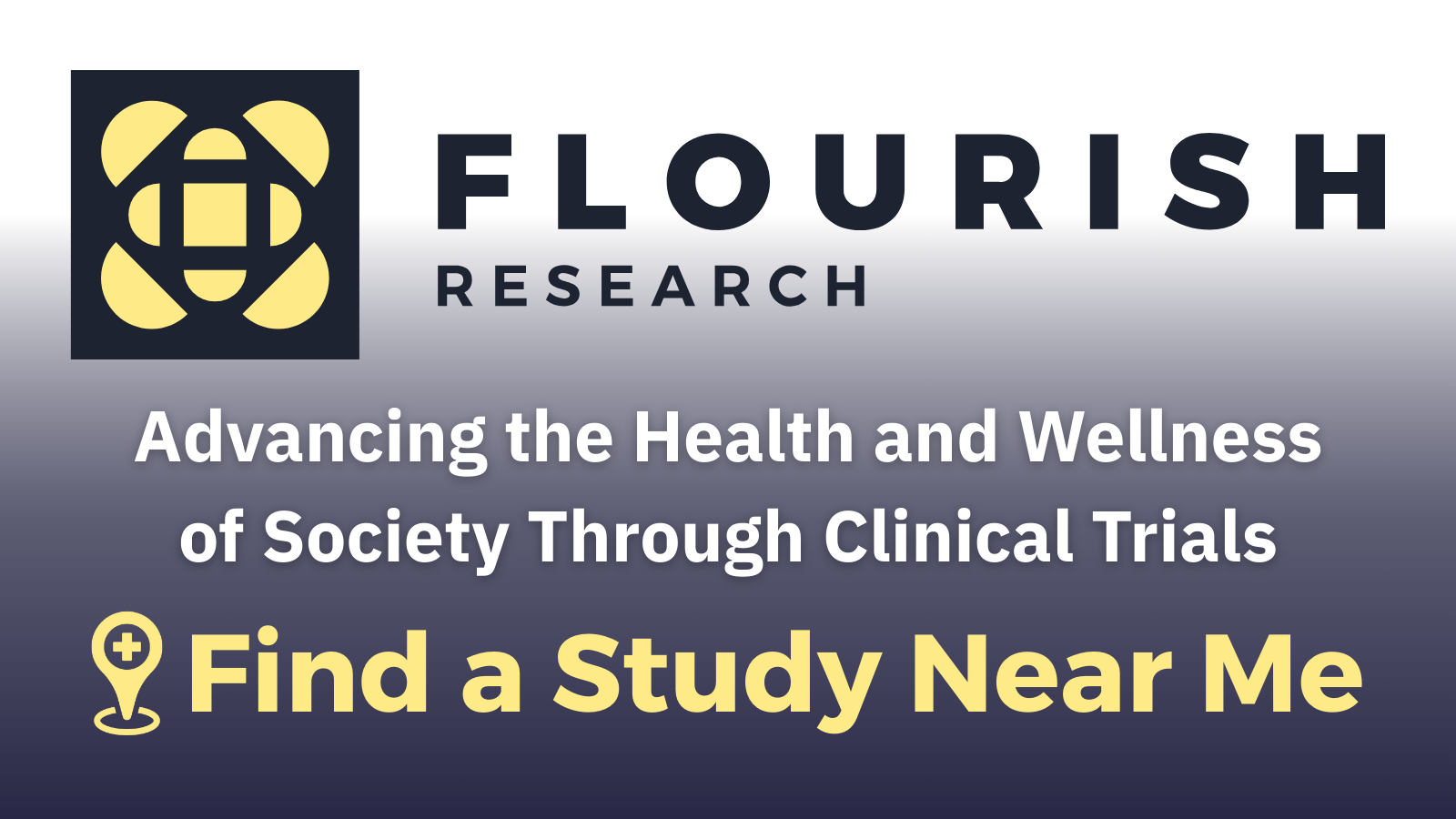Why Did RSV Cases Spike After the Pandemic?

Science is fun because sometimes you find things you didn’t even know you were looking for. When the COVID-19 pandemic hit, people stayed home, wore masks, avoided public places and events, and were more careful about spreading germs. Because of this, we saw rates of other infectious diseases plummet. One of these, respiratory syncytial virus (RSV), typically follows a seasonal pattern. During the pandemic, positive tests for RSV dropped precipitously. This was expected, but what was surprising was a huge jump after COVID-19 restrictions were eased. After the pandemic, RSV rates didn’t just return to normal; researchers found high rates of RSV outside of the typical winter season. Rates continued to stay high throughout the year. In fact, positive RSV tests remain much higher than before, so what changed?
Testing changed. When COVID-19 hit, there was a scramble for accurate tests of respiratory infections. We all remember at-home and drive-in COVID-19 swabs that felt like something trying to poke your brain through your nose. These helped us know whether we should call Mom for some chicken noodle soup or avoid her and everyone we knew while we self-isolated. In hospitals, this was an even bigger deal to avoid an outbreak. In response, they began running full respiratory pathogen panels. These tested for COVID-19 and other coronaviruses, rhinovirus, flu viruses called influenza, bacterial infections, human metapneumovirus, and RSV. Before the pandemic, total off-season RSV testing was very low - a few thousand a month. Since 2021, however, that number has stayed constantly high, with average amounts being 3-4 times higher. These increased tests showed a much higher base level of RSV in hospitalized patients. So what is RSV anyway, and are there other important viruses to worry about?
Respiratory syncytial virus is a ubiquitous virus that infects almost everyone at some point in their lives. Most of the time it doesn’t do much damage, but it can lead to hospitalization and death in a significant number of people. It can infect the respiratory tract, which includes the nose, mouth, throat, and lungs. If the upper portions are infected, symptoms may be cold-like, with coughing and a runny nose - or a person could be symptom-free. When lower portions of the respiratory tract are infected, the lungs and throat can become inflamed, causing difficulty breathing, pneumonia, and severe complications. These complications are most dangerous for children under the age of 5 years old and seniors over 60 years of age. RSV is the leading cause of respiratory tract infection in children. The second leading cause is human metapneumovirus (hMPV).
Human metapneumovirus (hMPV) is rather similar to RSV in its protein makeup, resulting in similar symptoms. Much like RSV, human metapneumovirus can cause cold-like symptoms when the upper airway is infected and serious breathing issues when the lower respiratory tract is infected. Also similar to RSV, hMPV may infect anyone but is particularly dangerous to those under 5 and over 60 years of age. Additionally, off-season testing for hMPV has approximately doubled since the COVID-19 pandemic.
So now that we’re testing and detecting RSV and hMPV, what can we do for these viruses? Unfortunately, if a severe infection occurs, these diseases can make breathing difficult and can also exacerbate other underlying conditions like chronic obstructive pulmonary disease (COPD) and congestive heart failure (CHF). Antibiotics don’t work on viral infections, so most care for RSV and hMPV is supportive and directed at relieving the symptoms. This includes staying hydrated, providing extra oxygen if needed, and checking with your doctor if breathing or other symptoms exacerbate. For those under 2, there is not currently an approved RSV vaccine, but there is an approved monoclonal antibody to help prevent lower respiratory tract disease. There is an approved RSV vaccine for pregnant mothers and those above 60. Unfortunately, no approved hMPV vaccine is currently on the market, but clinical researchers are looking for ways to keep you from holding your breath for one. Luckily, extra testing during the pandemic helped us understand how widespread RSV really is. With the participation of volunteers in clinical research trials, maybe we can help scientists make vaccines that bring that number down to where we thought it was, and help everyone breathe a little easier.
Staff Writer / Editor Benton Lowey-Ball, BS, BFA
Click Below for ENCORE Research Group's Enrolling Studies
References:
Domachowske, J. (January 8, 2023). Pediatric human metapneumovirus treatment & management. Medscape. https://emedicine.medscape.com/article/972492
Havers, F. P. (2023). Characteristics and outcomes among adults aged≥ 60 years hospitalized with laboratory-confirmed respiratory syncytial virus—RSV-NET, 12 states, July 2022–June 2023. MMWR. Morbidity and Mortality Weekly Report, 72. https://www.cdc.gov/mmwr/volumes/72/wr/mm7240a1.htm
Jain, S., Self, W. H., Wunderink, R. G., Fakhran, S., Balk, R., Bramley, A. M., ... & Finelli, L. (2015). Community-acquired pneumonia requiring hospitalization among US adults. New England Journal of Medicine, 373(5), 415-427. https://www.nejm.org/doi/full/10.1056/NEJMoa1500245
Labcorp Corporation of America. (2021). Respiratory pathogen panel. https://www.labcorp.com/tests/139845/respiratory-pathogen-panel
National Respiratory and Enteric Virus Surveillance System. (July 13, 2024). NREVSS dashboard. Centers for Disease Control. https://www.cdc.gov/nrevss/php/dashboard/index.html
Pfuntner, A., Wier, L. M., & Stocks, C. (2013). Most frequent conditions in US hospitals, 2011. https://www.ncbi.nlm.nih.gov/books/NBK169248/
Quest Diagnostics. (2019). Respiratory viral panel, PCR. https://testdirectory.questdiagnostics.com/test/test-detail/95512/respiratory-viral-panel-pcr?cc=MASTER
Rios-Guzman, E., Simons, L. M., Dean, T. J., Agnes, F., Pawlowski, A., Alisoltanidehkordi, A., ... & Hultquist, J. F. (2024). Deviations in RSV epidemiological patterns and population structures in the United States following the COVID-19 pandemic. Nature communications, 15(1), 3374. https://www.nature.com/articles/s41467-024-47757-9
Smith, D. K., Seales, S., & Budzik, C. (2017). Respiratory syncytial virus bronchiolitis in children. American family physician, 95(2), 94-99. https://www.aafp.org/pubs/afp/issues/2017/0115/p94.html
van den Hoogen, B. G., Bestebroer, T. M., Osterhaus, A. D., & Fouchier, R. A. (2002). Analysis of the genomic sequence of a human metapneumovirus. Virology, 295(1), 119-132. https://repub.eur.nl/pub/3864
Williams, J. V., Harris, P. A., Tollefson, S. J., Halburnt-Rush, L. L., Pingsterhaus, J. M., Edwards, K. M., ... & Crowe Jr, J. E. (2004). Human metapneumovirus and lower respiratory tract disease in otherwise healthy infants and children. New England Journal of Medicine, 350(5), 443-450. https://www.ncbi.nlm.nih.gov/pmc/articles/PMC1831873/



